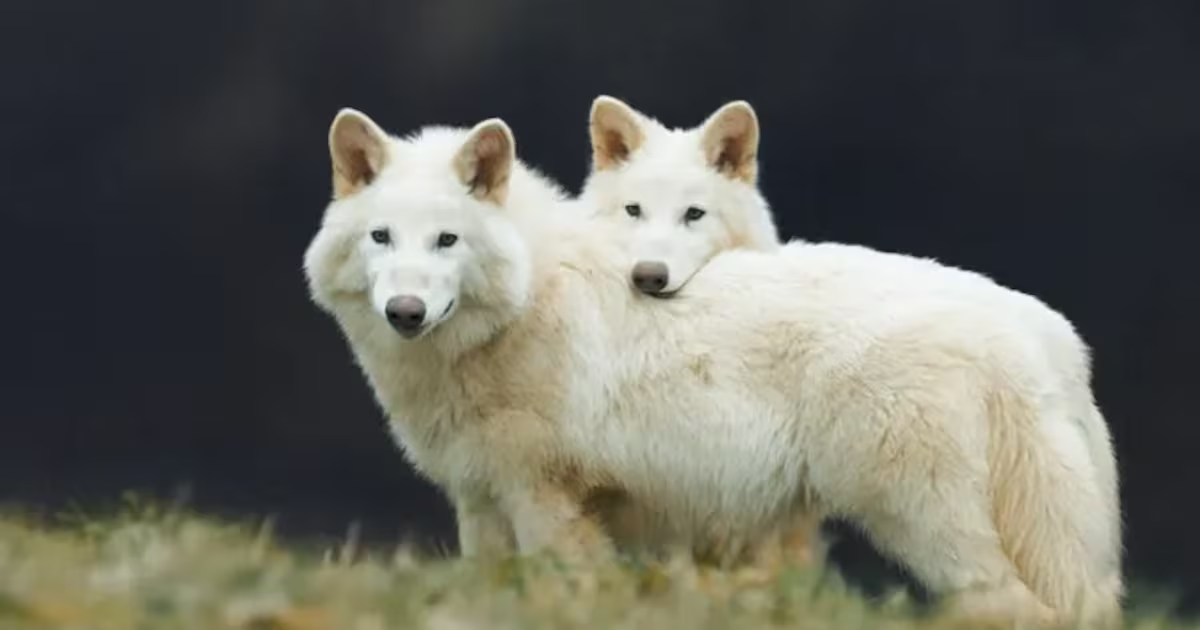Game of Thrones fans have raved about dire wolves since the show’s first episode, admiring the fantastical white creatures for their nearly unnatural strength and ferocity. But for the first time in 10,000 years, you don’t have to stream MAX to see them. In fact, they’re no longer fictional beasts. As of late last year, the company behind the viral woolly mammoth mouse reveals it brought the dire wolf back from extinction.
The shocking resurrection has left people nationwide questioning the ethics behind the company, Colossal Biosciences. Some don’t believe that humans should play God. Others worry about the creatures’ ability to readjust to normal life, or the growing threat of invasive species. But Colossal CEO Ben Lamm wishes “we could separate philosophical perspectives from science,” something he defended on today’s episode of conservative commentator Joe Rogan’s podcast.

As Colossal faces heightened scrutiny, the three real-life dire wolves continue to grow. The two male pups, Romulus and Remus, tip the scales at 80 pounds each but could grow up to 150 pounds, or more than three times the weight of an average pit bull. The snowy white creatures are aloof and wild, and the male pups and their new younger sister, Khaleesi, are the first three in existence for 10,000 years.
The dire wolf once roamed America from South America to Canada. But they haven’t been seen since the 9th Century BCE. Colossal scientists were able to harness cutting edge software and AI technology to bring them back from the beyond. They used ancient, preserved DNA—including a 72,000-year-old skull—to rewrite the genetic code of a common gray wolf and use domestic dogs as surrogate mothers to give birth to Romulus, Remus, and two-month old Khaleesi.
 The wolves are named Romulus, Remus, and Khaleesi. Colossal Biosciences
The wolves are named Romulus, Remus, and Khaleesi. Colossal Biosciences
“This is essentially real life Jurassic Park” said Joe Rogan in an interview with Lamm that aired Monday. The Colossal CEO said his background is in software but he’s just a “weirdly curious person.”
“I was interested in synthetic biology,” he said. “This idea that we could engineer life. And that we could use AI to make it even better. How do we do directed evolution?”
Colossal hasn’t only experimented with dire wolves. The company, which was founded in 2021 and employs 130 scientists, wants to bring back the woolly mammoth, the dodo, and the Tasmanian tiger. In March, Colossal made headlines for creating 36 woolly mice (including two named Chip and Dale).

“The only unintended consequence was that they were cute as f—,” said Lamm on Rogan’s podcast. “People lost their minds.”
People are now going berserk for the dire wolves.
The company has brought in massive funders, including celebrities like George R. R. Martin and Peter Jackson who directed Lord of the Rings, who allowed the company to photograph the wolves on the Game of Thrones throne that he actually bought in an auction.
But they’ve also faced backlash.
“When we started the business we didn’t have any scientists,” said Lamm. “They’re like, ‘this is tech bros wanting to see cool animals.‘”
But Lamm defends the growth of his business, calling humans Earth’s “apex predator.”
“We inject our curiosity in choices every day,” he said. “We overfish the ocean, we over hunt something, in the case of the thylacine (Tasmanian Tiger), the Australian government put a bounty on its head and killed it off. Every time we cut down the rainforest, every time we drink hydrogenated water, we are playing God on some level. We humans are very good at changing the natural flow of things.”
 The wolves are already 80 pounds. Colossal Biosciences
The wolves are already 80 pounds. Colossal Biosciences
Rogan seemed to agree with the rhetoric before randomly launching into an anti-trans rant and telling Lamm that “the problem is not the scientific community, the problem is weak men.”
Rogan also claimed that when donors give grants to major institutions, it’s not as simple as “let’s follow data,” but “it’s all got to be attached to this very left-leaning, almost preposterous in some aspects, ideology.”
Scientific history is filled with examples of new species quickly becoming invasive. Native species can be totally destroyed, and instances of cloning has created defective and even painful issues in animals or the surrogate mother.
“There’s a risk of death. There’s a risk of side effects that are severe,” Robert Klitzman, director of the bioethics master’s program at Columbia University, told Time. “There’s a lot of suffering involved in that. There are going to be miscarriages.”
Others worry that the animals are now entering a world that is uninhabitable for them. For wolves that used to run across continents, even a wildlife preserve might feel like solitary confinement. And if the company brings back woolly mammoths, it could be even harder for them to adjust to the industrialized world.

Lamm said that the company is doing a lot of work to understand the ecological impact of their new creations. Colossal thinks it is a “moral imperative” to bring animals back, especially as The Center for Biological Diversity says that 30 percent of the planet’s genetic diversity will be lost by 2050, and genetic engineering could not only reverse extinction but preserve current species.
Lamm remains proud of his divisive pursuits: “This concept of speciation is a human construct that we are trying to impose on nature, that flows more like a river than a rock.”
